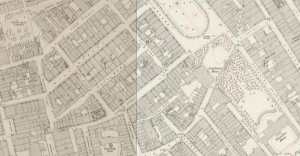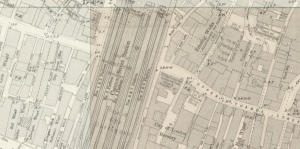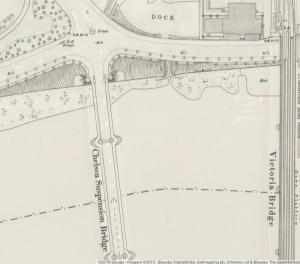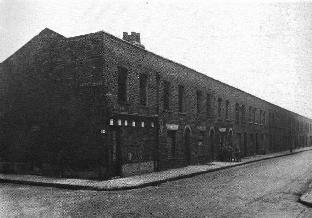The Albany in Piccadilly
The Albany in Piccadilly Circus is an apartment complex built in the late eighteenth century. The Albany appears in chapter three of The Picture of Dorian Gray, when Lord Henry goes to visit his uncle who resides there. The Albany was intended to house bachelors, which is fitting of Wilde’s description of Lord Fermor as “a somewhat rough mannered old bachelor” (Wilde), and it had its fair share of famous residents both real and fictiona (Victorian Web)l. The Albany serves as the backdrop for when Lord Fermor tells Lord Henry about Dorian’s family tree. Fermor reveals that Dorian came from a wealthy lineage, and his grandfather presumably left him a large sum of money. He also talks about how Dorian’s beautiful, wealthy mother married a poor man, who died shortly after they wed. He said Dorian’s mother was a well-liked woman amongst elite social circles, and she had her fair share of potential suitors. It was a shock for her to marry someone so poor.
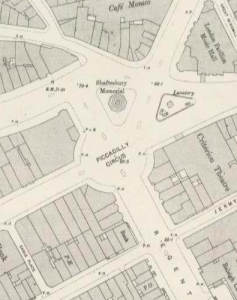
One of the most suiting features of placing this scene in the Albany is that it is home to a large community of bachelors. Fermor is mostly telling the story of Dorian’s mother when she was a young bachelorette. It is likely that many men who were residents of the Albany were potential suitors for her. The other aspect that is interesting are the crimes that The Old Bailey has reported involving the Albany. They are almost all acts of theft. This may be an echoing of how Dorian’s father was murdered. Just as many people have personal items taken, Dorian’s father had his life taken from him. This is also similar to how Dorian’s soul has been stolen into the portrait of himself. The Albany represents the luxury of single-life, but it also shows the darker side where things are simply taken without any meaning.
Works Cited
“Albany, Piccadilly, London.” Albany, Piccadilly, London. Victorian Web. Web. 17 Dec. 2015.
Booth, Charles. “Booth Poverty Map & Modern Map (Charles Booth Online Archive).” Booth Poverty Map & Modern Map (Charles Booth Online Archive). LSE Library. Web. 17 Dec. 2015.
“The Proceedings of the Old Bailey.” London History. Old Bailey Online. Web. 17 Dec. 2015.
Wilde, Oscar. The Picture of Dorian Gray. New ed. Wikisource, 1891. Print.

